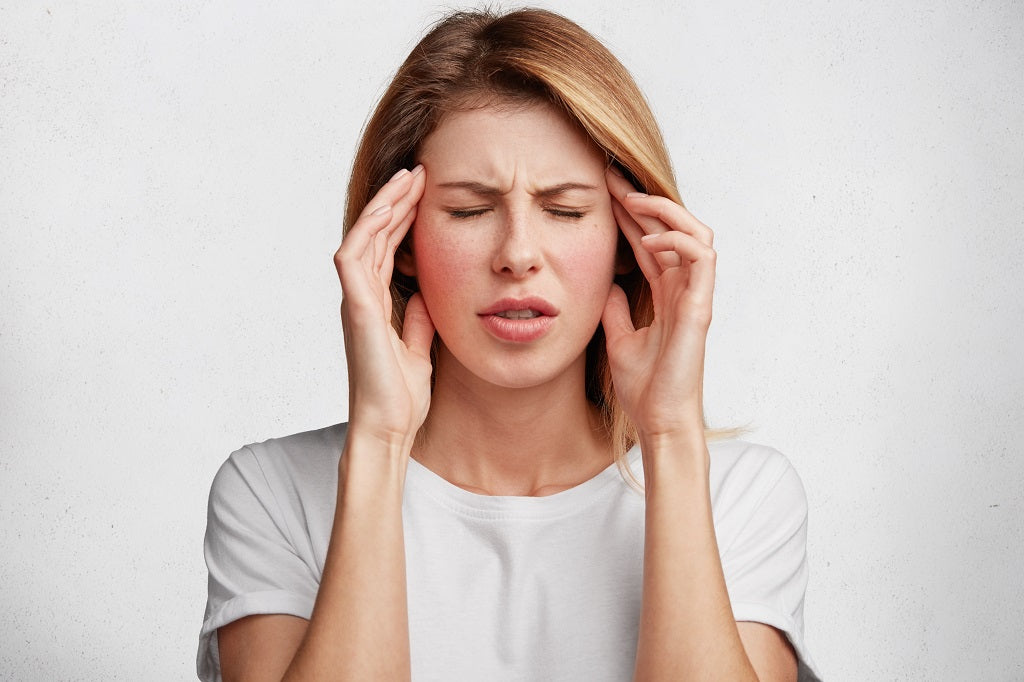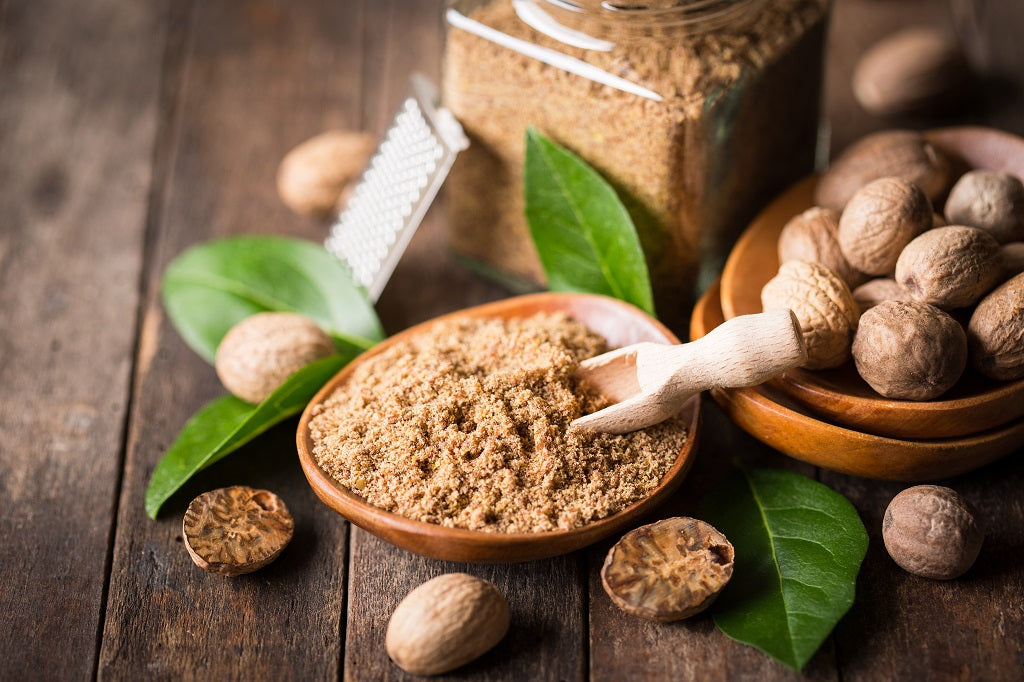Muscle cramps are painful, sudden, involuntary bursts of contractions in a group of muscles. The sensation of cramped muscles is gravely tightened, rigid and extremely unbearable. It becomes difficult for a person suffering from muscles cramp from performing normal tasks. The person will have to drop off everything in order to tend to the tightening and painful sensation. Muscle cramps most often occur in the calf, thigh, hamstring, rib, arm or foot muscles. Everyone experiences the sensation of muscle cramps several times in their lives.
What Causes Muscle Cramps?
The most common causes of muscles cramps are:
1. Neurological
Diseases related to the brain, nerves and spinal cords register muscle cramps as a common symptom. An example of a neurological instigator is - Parkinson's disease.
2. Medications
Certain medications for treating the nervous system, muscle disorders, and joint pain may have side-effects in the form of muscle cramps.
3. Loss of Electrolytes
Low levels of calcium, magnesium, potassium in the blood can cause cramping of muscles.
4. Mechanical Movement
Repeated and prolonged athletic or mechanical work is associated with an increase in muscle cramps and soreness.
5. Pregnancy
There is high depletion of magnesium and other minerals during pregnancy due to a number of reasons like morning sickness which leads to muscle cramps. The loss of magnesium is caused by constant purging of food leads.
6. Metabolic Disorders
Other common diseases associated with muscle cramps are diabetes, thyroid, high or low blood pressure, addiction to drugs, alcohol and substance abuse, etc.
7. Artery Disease
There can be reduced blood flow to muscles due to peripheral artery disease which can cause muscle cramps.
8. Dialysis
A person subjected to dialysis treatment can often suffer from cramping of muscles.
How To Treat Muscle Cramps At Home?
1. Epsom Salt

What You Will Need
Epsom Salt - ¼ cup
What To Do
- Add a ¼ cup of Epsom salt to a bathtub filled with hot water.
- Mix the salt well using your hand.
- Soak your body in the bathtub for 10-15 minutes.
How Often To Do
You can do this 3-4 times a week.
Why This Works
Epsom salt has a high presence of magnesium which gets absorbed directly through the skin. Magnesium is essential for effectively treating muscle pain.
Also Read : 20 Wonderful Benefits of Epsom Salt for Skin, Hair and Health
2. Castor Oil
What You Will Need
- Cold-pressed castor oil - 3 tablespoons (this can vary depending on the size of the plastic wrap or cloth)
- Plastic wrap or cloth - 1-2
- Heating pad - 1
- Sterilized Cotton Balls - 2-3
- Towel - 1
What To Do
- Put the plastic wrap or cloth in hot water.
- Let it soak for a while before drying it out.
- Apply 3 tablespoons or less of castor oil on the wrap.
- Create a thin layer of the oil before wrapping it carefully around the muscle.
- Leave the castor oil pack on for next 8-10 hours, preferably overnight.
- Use a heating pad to warm the castor pack at equal intervals.
- Use a towel to clean off the oil spillage caused by the application - around the knees or any other part of the body.
- Remove the castor oil wrap after 8-10 hours.
- Use a warm wet towel to clean off the oil from the muscle.
How Often To Do
You can repeat this remedy once every day until you the pain has left the muscle.
Why this works
Castor oil effectively counters the radicals that are causing the muscles to strain. It eases the pain and gives relief overnight.
Also Read : Tips to Use Castor Oil for Knee Pain
3. Hydration

What You Will Need
Water - 8 glasses
What To Do
Drink at least 8 glasses of water every day to keep the water hydrated.
How Often To Do
You should take sips of water throughout the day.
Why This Works
Hydration improves the flow of blood throughout the body. It also balances the levels of magnesium, potassium, calcium and other minerals in the body that re needed for day-to-day functioning.
4. Pickle Juice
What You Will Need
Pickle juice - 3 tablespoons
What To Do
- You can make a shot of pickle juice from store-bought cucumber pickles or homemade pickles.
- Drink it from a vodka shot glass every day.
How Often To Do
You can do this once every day.
Why This Works
Pickle juice has high sodium content which helps in replenishing the lost electrolytes in the body.
5. Baking Soda

What You Will Need
- Baking soda - 1 tablespoon
- Water - 1 cup
What To Do
- Add 1 tablespoon of baking soda to a cup of room temperature water.
- Mix it well and consume immediately.
How Often To Do
You can do this once daily.
Why This Works
Baking soda has sodium bicarbonate which helps in preventing and soothing muscle pain and soreness due to intense physical activity.
6. Heat
What You Will Need
Heating pad - 1
What To Do
- Apply the heating pad to the cramped area.
- Leave it on for 10 minutes.
- Re-apply after a couple of hours.
How Often To Do
You can do this 3-4 times a day.
Why This Works
Applying heat to the strained muscle helps in relieving the tightness, pain and soreness in the area.
7. Black Molasses

What You Will Need
Blackstrap molasses - 1 tablespoon
What To Do
Eat a tablespoon of blackstrap molasses.
How Often To Do
You can do this once or twice daily.
Why This Works
Black molasses has a high content of magnesium which is needed for restoring the muscles back to normal. Magnesium helps in relieving the pain caused by straining and soreness in muscles.
8. Hot Pepper Rub
What You Will Need
- Cayenne pepper - 2 tablespoons
- Coconut Oil - 2 tablespoons
- Wrap - 1 long piece
What To Do
- Combine 2 tablespoons of cayenne pepper and coconut oil.
- Rub the mixture around the cramped muscle.
- Massage in the mixture.
- Wrap a long piece of cloth across the cramped muscle.
- Leave it on for an hour.
How Often To Do
You can do this once daily. However, in case of burning sensation, remove the wrap immediately.
Why This Works
Cayenne pepper is a natural muscle relaxant recommended to patients suffering from chronic arthritis.
Also Read : 10 Best Essential Oils for Arthritis and Joint Pain Relief
9. Potassium

What You Will Need
Potassium-rich foods - bananas, spinach, broccoli, etc.
What To Do
Consume a high content of potassium enriched foods.
How Often To Do
You can do this three times a day.
Why This Works
Mineral depletion is often the cause of muscle cramps. Hence, consume a diet enriched with potassium, calcium and magnesium.
10. Stretching
What You Will Need
- Stretching band - 1
- Yoga mat - 1
What To Do
- Sit or stand on a yoga mat.
- Relax your muscle and use a locally available stretching band to perform some simple exercises.
- Perform spot stretches to relieve the pain in the affected area.
How Often To Do
You can do this once daily for 15 minutes. Do not overdo the exercises as it might overstrain the muscles.
Why This Works
Stretching helps in relieving the pain and strain in the muscles. It releases tightened and contracted muscles.
Disclaimer: All the content on www.anveya.com/blogs/top-tips is solely for information. It is not intended to be a substitute for professional medical advice, diagnosis or treatment. Always seek the advice of your physician or a qualified health care provider. The information, suggestion or remedies mentioned on this site are provided without warranty of any kind, whether express or implied.



